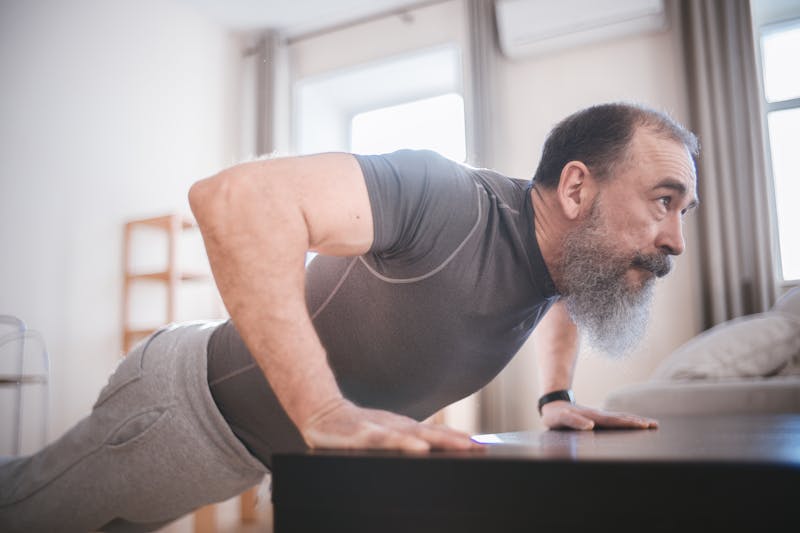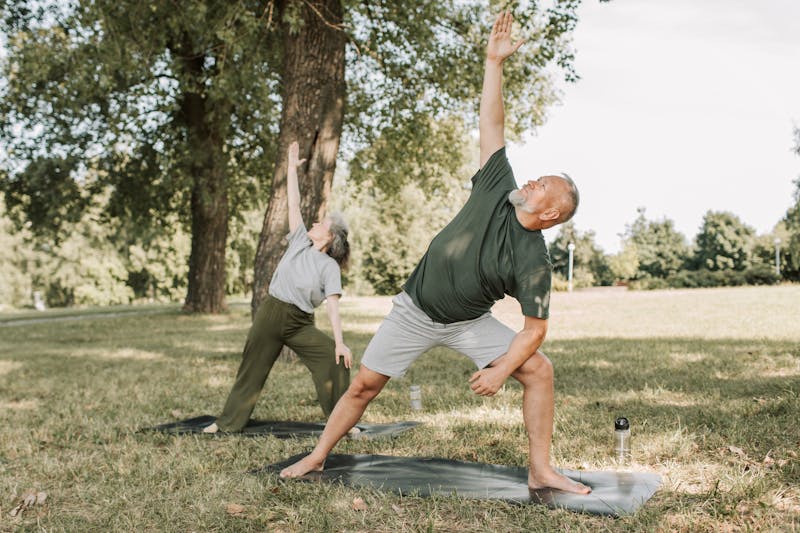Last Updated on October 3, 2025 by shawnshealth
Strength training for seniors boosts independence, mobility, and energy. Discover 7 powerful, safe, and effective ways to build lasting strength and vitality.
Introduction: Strength Training for Seniors
Strength training for seniors is one of the most powerful ways to maintain independence, energy, and quality of life. As we age, staying strong isn’t just about looking good — it’s about living well. For seniors, strength training can mean the difference between independence and dependence, mobility and frailty, energy and fatigue.
The good news? It’s never too late to start. Whether you’re in your 60s, 70s, or even 80s, you can gain strength, improve balance, reduce pain, and feel more confident in your daily life.
If you’re looking for simple, equipment-free routines, explore our guide to strength training without weights, featuring 5 powerful minimalist workouts you can do at home. In this guide, we’ll show you 7 powerful ways to build strength safely and effectively, supported by research and real-world results.

Why Strength Training Matters for Seniors 💪
- Preserves muscle mass and bone density
- Helps prevent falls and fractures
- Improves balance, posture, and flexibility
- Boosts confidence and daily independence
Safe and Simple Strength Moves to Start Today 🏋️♂️
- Chair squats: Build lower-body strength safely
- Wall push-ups: Gentle upper body activation
- Resistance band pulls: Improve posture and back strength
- Seated leg raises: Enhance circulation and leg tone
How Often Should Seniors Strength Train? ⏱️
- Aim for 2–3 sessions per week
- Allow 48 hours between sessions for recovery
- Focus on proper form over heavy weights
- Start with bodyweight or resistance bands
Proven Benefits of Strength Training for Seniors (Backed by Science) 📚
- A study in The Journal of Aging and Health found that seniors who engaged in regular resistance training had 20% less risk of falling
- Research from Harvard Health shows strength training improves blood sugar control, cognitive function, and arthritis pain
- According to the CDC, adults over 65 who perform strength training regularly can delay the onset of chronic disease
🛡️ Looking to build lasting strength, mobility, and confidence as you age? Senior Fitness: 15 Essential Principles for Strength, Mobility & Healthy Aging is your go-to guide for safe, effective movement—covering strength, balance, mindset, and recovery to help you stay strong and independent.
🛒 Looking to support your strength journey at home? Explore home fitness gear on Amazon
that makes getting started simple and safe—no gym required.
⚠️ As an Amazon Associate, I earn from qualifying purchases—at no extra cost to you.
Table of Contents
Disclaimer: This article is for informational purposes only and not a substitute for professional medical advice. Always consult with your healthcare provider before beginning any new exercise program.
Disclaimer: As an Amazon Associate, I earn from qualifying purchases—at no extra cost to you.

Author’s Note / My Experience
As someone who has worked with people of all ages, dealt with joint challenges myself, and am a senior now as well, I’ve come to deeply appreciate the transformative power of bodyweight and resistance training, especially for seniors. I’ve seen firsthand how consistent, gentle strength work can reduce pain, improve movement, and build lasting confidence — even for people who thought they were “too old” to begin.
7 Powerful Ways to Build Strength as a Senior
1. Start with Bodyweight Exercises
Using your own body weight is one of the safest and most effective ways to build strength. Think chair squats, incline push-ups, and standing heel raises. These exercises require no equipment and offer a low-impact way to build functional strength.
Building strength that transfers to everyday activities is key for seniors aiming to stay independent and capable. For those interested in practical, rugged strength training, check out Unlock Farmer Strength: The Rugged Blueprint for Real-World Power.

2. Use Resistance Bands for Joint-Friendly Gains
Resistance bands are easy on the joints and adaptable to any strength level. They’re especially helpful for arm, shoulder, and upper back exercises — all crucial for posture and daily function.
For expert-backed strategies, check out Harvard Health’s strength training tips for older adults.
3. Train Balance Alongside Strength
Falls are a major concern for aging adults. Incorporate balance training like single-leg stands or gentle tai chi movements to build stabilizer muscles that protect you from injury.
Looking for a simple way to stay strong at home? Don’t miss our guide on bodyweight strength training after 60 — no equipment needed.
4. Focus on Core Strength for Stability
A strong core improves balance, helps prevent back pain, and supports nearly every movement you make. Seated knee lifts and bird-dog exercises are senior-friendly and highly effective.

5. Prioritize Recovery and Rest
Seniors need more recovery time than younger adults. Avoid training the same muscle group two days in a row and incorporate stretching or light walking on off days to support recovery.
6. Work with Light Weights or Cans
Even soup cans or water bottles can help you perform bicep curls, overhead presses, and tricep extensions. Light resistance done with control is enough to stimulate strength gains.
7. Stay Consistent and Track Progress
Small improvements — like standing up from a chair more easily — are victories. Keep a journal, take photos, or track reps to stay motivated. Strength gains may be slower with age, but they absolutely happen with consistency.
Conclusion
Strength training for seniors isn’t just about muscles — it’s about freedom, vitality, and confidence. Starting now, even with just a few minutes a day, can make a massive difference in your quality of life. With safe movements, smart recovery, and a little consistency, strength is truly ageless.
For seniors looking to build strength without equipment, bodyweight exercises are an excellent option. Check out The Ultimate Calisthenics FAQ: Everything You Need to Know About Bodyweight Training for comprehensive tips and guidance.
🗂️ Want more routines and guides? Browse our full Senior Fitness collection for accessible workouts, tips, and motivation.

🔥 Gear to Help You Achieve Your Health and Fitness Goals 💪
If you’re looking for tools to enhance your fitness journey, check out this. Explore top-rated fitness gear on Amazon to enhance your workouts. Check out the latest picks here! 🛒 to support your workouts and progress.
🚀 Find equipment designed to boost strength, endurance, and overall performance!
⚠️ Short disclaimer: As an Amazon Associate, I earn from qualifying purchases.
Frequently Asked Questions (FAQ): Strength Training for Seniors
❓Is strength training safe for people over 70?
- Yes, when done properly. Start with light resistance and focus on form. Always check with your doctor first.
❓What’s the best strength exercise for seniors?
- Chair squats and resistance band rows are excellent for full-body strength and safety.
❓How soon will I see results?
- Many people notice improved energy, posture, and strength within 4–6 weeks of consistent training.
❓Can strength training help with arthritis?
- Yes. According to the CDC, strength training can reduce joint pain and improve flexibility when done gently.
❓Do I need a gym to start?
- Not at all! You can use your bodyweight, resistance bands, or light weights at home.
❓How long should a senior strength session be?
- Around 20–30 minutes, 2–3 times per week is effective for most beginners.
❓Is it okay to combine strength training with walking?
- Absolutely. Walking supports cardiovascular health while strength training supports muscle and joint health — a perfect combo.
❓Are there programs made for senior strength training?
- Yes! Programs like SilverSneakers and free YouTube videos like HASfit or the Body Project cater specifically to older adults.
📺 Watch: 4 Proven Ways to Reverse Muscle Loss for Seniors
Ready to take the next step in your strength journey?
Visit ShawnsHealth.com for expert tips, senior-friendly workouts, and encouragement to help you stay strong and independent for life. Let’s build lasting strength—together!
Fear not, for I am with you; be not dismayed for I am your God; I will strengthen you, I will help you, I will uphold you with My righteous right hand. – Isaiah 41:10




